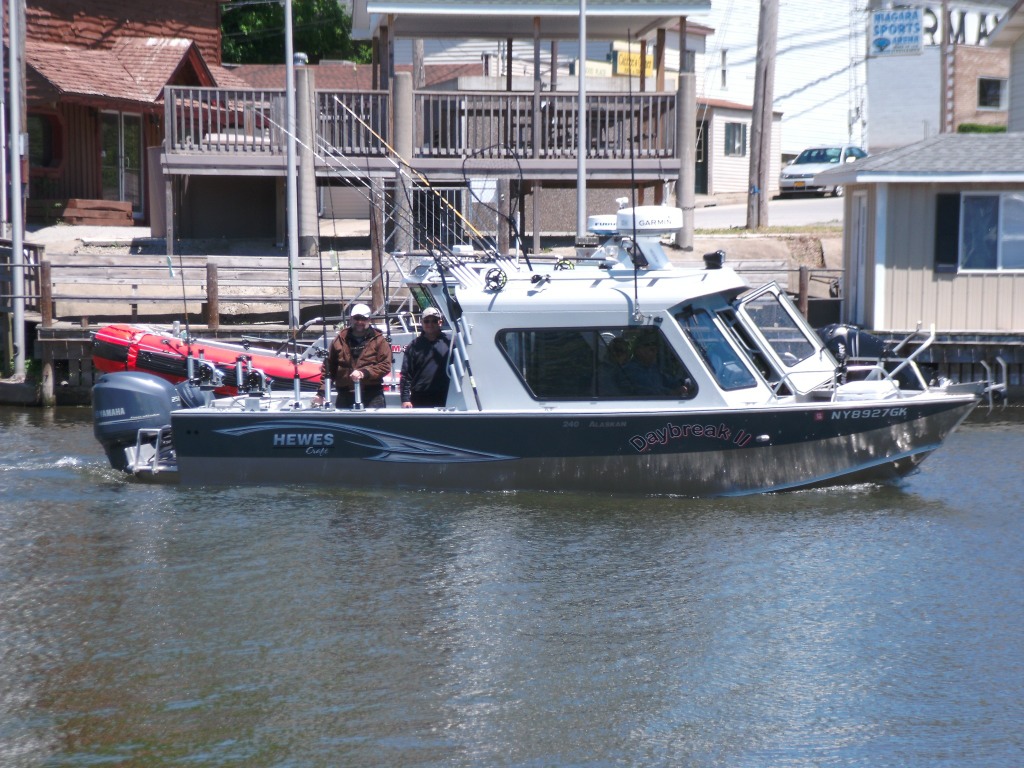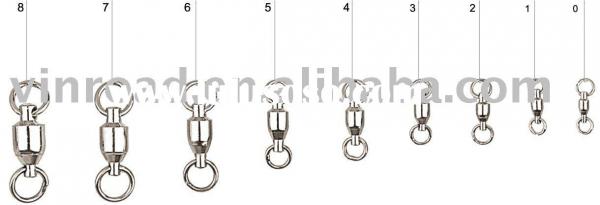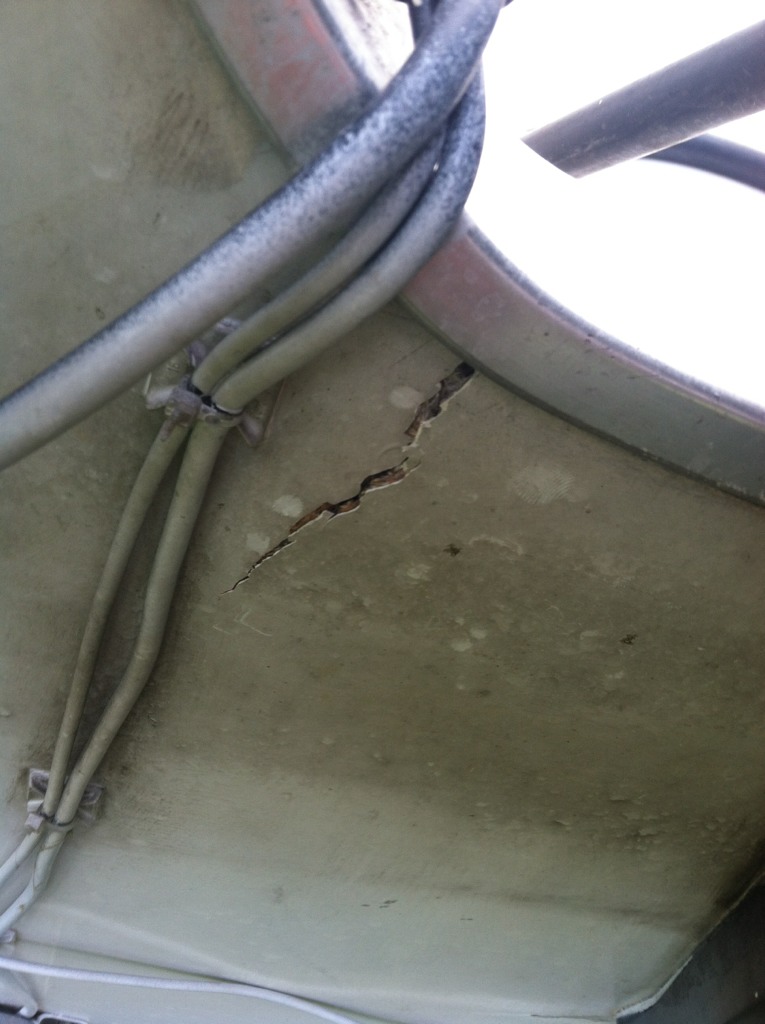

Don Supon
Professional-
Posts
419 -
Joined
-
Last visited
Everything posted by Don Supon
-
RustyRat- I need the butt section of the roller rod. Putting on a twillie tip is easy if someone wants to go that way. My choices are to replace the butt end of roller rod, put a twillie tip on a standard guide dipsey rod for use with 7 strand wire (possess the rod already), or keep the same tip on that other rod and switching to 19 strand wire (have the 19 strand wire in possession) and use the existing tip. I'm asking for help in locating a roller butt end or for experience with 19 strand wire and it's effect on a standard rod tip.
-

Olcott 8/20 & 21
Don Supon replied to jpiatkowski's topic in New York Fishing Reports - Lake Ontario (South Shore)
On Monday the temp was 46/7 where 50 ft. was bottom. Found similar temps out deep that day (47 degrees down 50'). -
Bump Can't anyone help?
-
I have been using a BD-TR-862MH-1 (8'6 roller rod MH) now in it's 2nd season. The butt section snapped 5 in. from the hand grip (thickest area). Okuma has been out of production of these for a while and can not help me. One year warrantee is gone, and they do not have any left over. I'm looking for a replacement butt section for this 8'6 MH roller rod. Anyone know where I might find one? Not a fan of Twilley Tips on a dipsey rod; is anyone using the 19 strand wire on a dipsey rod with standard eyes? It is claimed that it can be used this way with no damage to the eyes. I can do it this way if necessary as I already have the components, but doen't want to ruin another rod before finding out if the 19 strand wire claims are true. What are the experiences out there? Thank you in advance.
-
What TroutBum said. You can "fix" a cheater at a specific location on the main line with a rubber band. Half-hitch the rubber band to the main line at desired height above the main lure, and then attach the cheater swivel to rubber band and main line both. If you run stacked rods on the same rigger, don't cheat the bottom rod to avoid tangles. It IS ok to cheat the top rod in this set-up, giving you three lures on that rigger.
-
Depends on what you want it to do for you. If you are drifting and use it for boat positioning, a 12V system will be fine. But if you want to troll with it, a 24V or higher will serve much better. Shaft length is important. You don't want the prop coming out of the water a lot in waves. 60in.will work well. The more add-ons you want, the more expensive. Auto-pilot and remote steering come to mind, as well as linkage to a FF to track bottom contours or depth.
-
You need an autopilot system. My system uses a gyro compass, hydraulic pump to steering piston , steering actuator (motor specific), throttle control assembly (motor specific), and a control module (computer system to control all). And this is connected to the GPS. Autopilot is not something you could piece together yourself; is that what you are trying to do? You'll have to research the different brands of autopilot and purchase a package that fits your needs. Expect to pay thousands, I doubt there are other options. Some fishermen use different means to tie off the steering wheel to maintain a direct line (bungee cords, etc.). Throttle control is another issue. Autopilot compensates for wind and wave impacts on a course to steer you in the desired direction or to a desired waypoint. In high winds or cross currents or waves from different angles, the autopilot compensates for these things and keeps you on course. At times the motor RPMs have to be increased to make it possible to allow it to accomplish this.
-
My autopilot is a standalone system (TR1 Gold for kicker). It could navigate by itself, I think, but mine is connected to a GPS to enable waypoints and have the ability to return to specific spot when using MOB or back tracking. A fishfinder is not part of the autopilot equation, but the chartplotter portion would be applicable, assuming GPS is part of its system.
-
Corroded leads or bad power switch. Test the feed wire to the power switch with a voltage meter and compare it to what goes out to the electronics. Both should be the same voltage.
-

What electronics do you consider "necessary" for Ontario trolling?
Don Supon replied to Sicarii's topic in This Old Boat
-
To attempt to see your downrigger ball on the FF, angle the transducer to aim a little further back, behind the boat instead of straight down. That will throw off the accuracy of the depth on the FF, but if you can see the actual ball tracking you will see it's relationship to any hooks on the screen and be able to adjust the ball accordingly. Dual frequencies on the FF may give a better "see" in one frequency, as has been mentioned. Hope this helps you- worked for me.
-

Port and Center Rigger crossing!?
Don Supon replied to trenchfisherman's topic in Questions About Trout & Salmon Trolling?
After rereading your question I realize your lure on port side is catching the center rigger cable. My response was to the idea that the cables were being crossed somehow. Do you run the leads from the ball to lure very tight to the ball? If so, I could understand a 5 ft. lead catching the center cable if that cable's ball has excessive blowback and/or is swinging wildly. Or if the port ball is tracking toward the center. If this is the case, suggest you increase the lead length to the lures (to 10 ft. or more) to get the lures outside of the swing area of the center ball. It still seems like there is a problem with how your center and port balls track. That it still the likely problem. I was wondering why a fellow would run a ball in the center with fish shape or torpodeo shape on the two outsides. Seems to me that all three should be of the same shape for consistency. -

Port and Center Rigger crossing!?
Don Supon replied to trenchfisherman's topic in Questions About Trout & Salmon Trolling?
What you describe doesn't make sense to me. Shouldn't be a problem. Is your port rigger weight bent so that it tracks toward center of boat while the round center ball is swinging? Maybe replacing the center ball with what is on the outside two would solve it. -

Navigating the international boundary
Don Supon replied to jeffinsackets's topic in Open Lake Discussion
The border is clearly marked on my GPS. The dashed red line stays when I am zoomed in and close enough. Mine is a Garmin. -

Wanted tr1 gold autopilot
Don Supon replied to outback kennels's topic in Classifieds - Buy, Sell, Trade or Rent
trollingsolutions.com -
The above swivels would be used to join two lines togeter. I thought you were looking for a snap-swivel to attach the lure with. If that is the question, I use round bend snap swivels (not the V shape) from Cabellas. Premium grade cross lock 1 1/4-1 1/2 inches long. Wire strength needs to be heavy for kings.
-
For the wire rod you will need a dipsy, leader, fish catcher (SD/fly, SD/lure, Lure). Snubber optional after the dipsy. Plus swivels to make the connections. For the copper you need a 20-50 ft leader to the lure of choice (Same choices as for wire rod). No snubber. Barrell swivel to connect copper to leader (small enough to go thru line guide on reel) strong enough to handle 30 lb'er. A site search will provide opinions on all of this needed tackle.
-
Only been on center console boats during charters in Fl. and La. Rod holders have always been placed on the sides of the console with rods standing on butt ends. There was adequate room to walk by them.
-
-
The Senator DOES HAVE my sympathy and support. HasBeen ownes the ability to respond to a political statement with a different political statement. But I don't think your intention was to be political; probably humanitarian.
-
The tach should be connected to the motor and to a power source. Check the wires connected to the back of the tach. Look for broken, cracked , loose connections at both ends of these wires. Clean all connectors, as there may be corrosion blocking current. If all looks good, the tach itself may have an internal malfunction. Don't know how to test that.
-
Dave is looking for opinions on how to make a track system function as a mount for a planer board mast (each side). He has been advised that there would likely be too much torque on the gunnel if this is attempted. What do you other fishermen advise?
-
A "black box" performs this function. Cannon riggers have PIC (positive ion control). Newer models have this programmed into the circuit board and it is a set voltage, while other models (Mag 20) have an adjustment knob to change the voltage. I have the Mag 20 and prefer 7.0-7.5 for salmon. It worked for me. But when my board malfunctioned and had to be replaced, cost was $350. So it got replaced with a Mag 10 board for $75. However, now I am stuck with the factory setting for PIC- with no adjustments. The adjustment knob is still part of the rigger, but does nothing. Everything has a cost!



